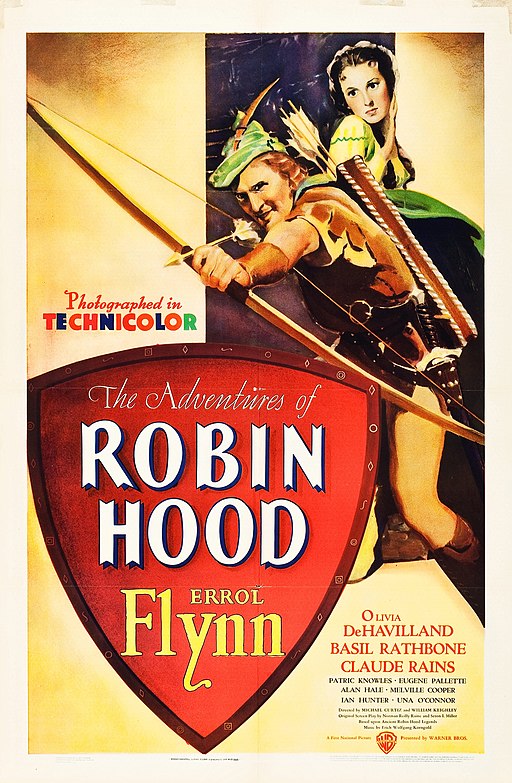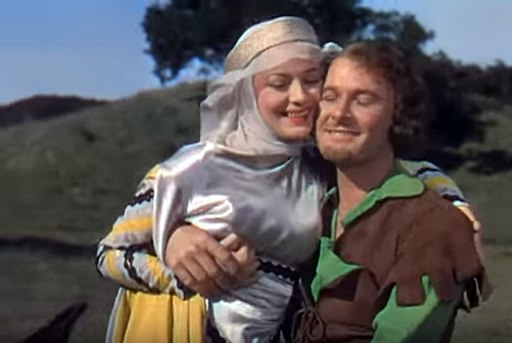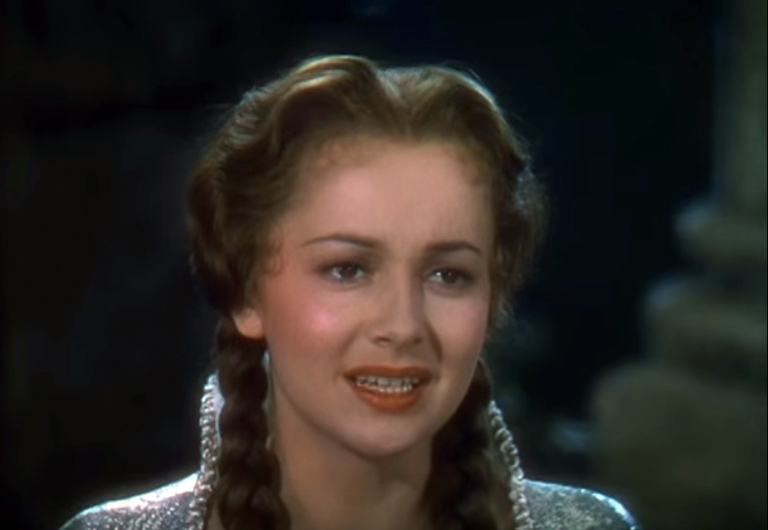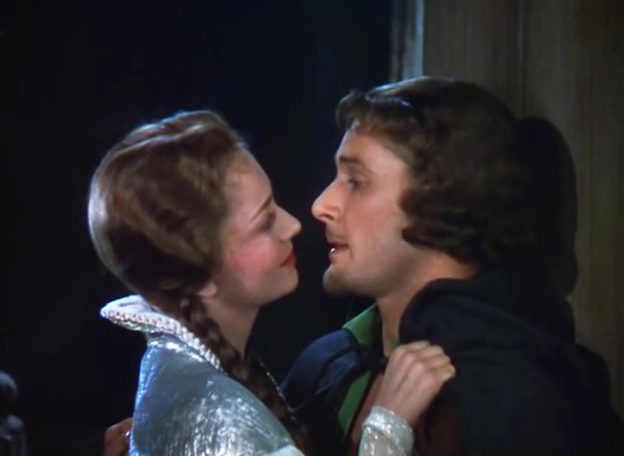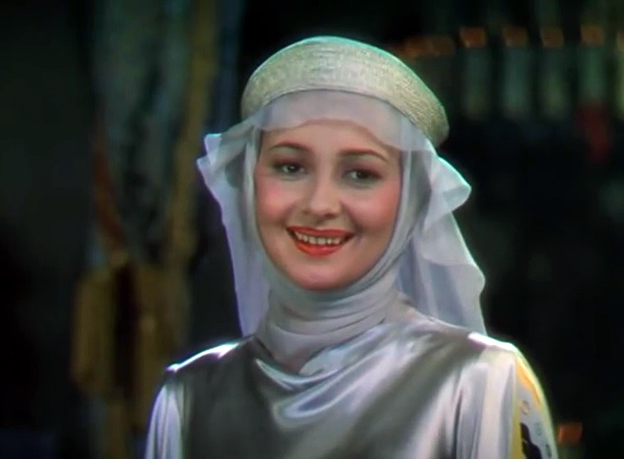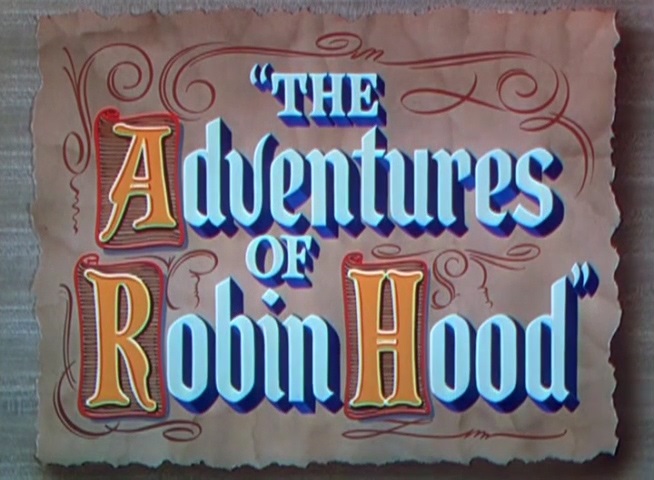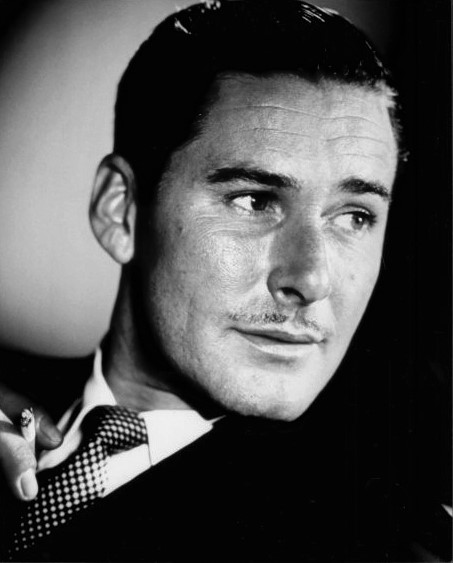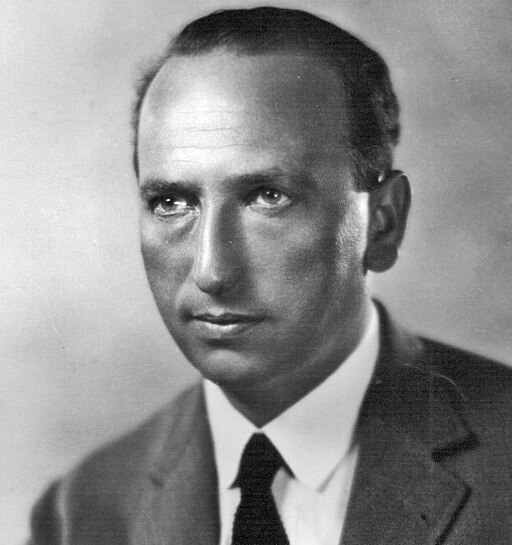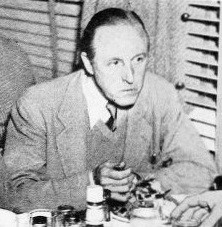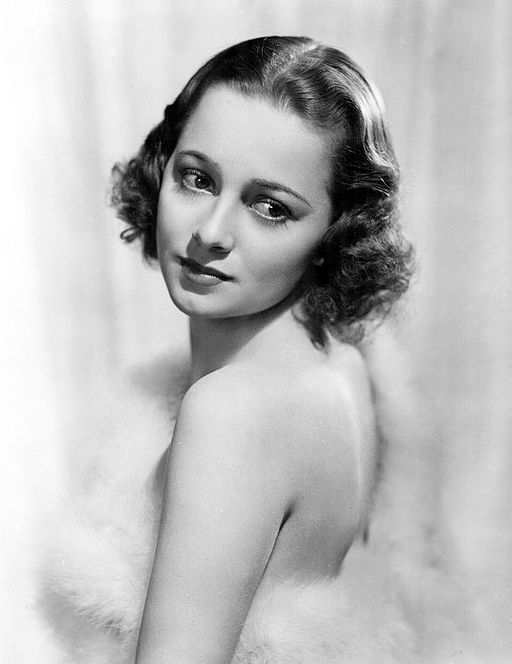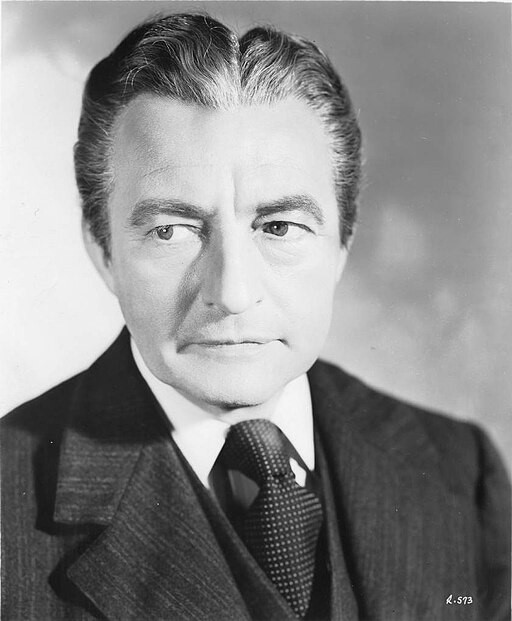The Adventures of Robin Hood - 1938
back| Released by | Warner Bros. |
| Director | Michael Curtiz and William Keighley |
| Producer | Hal B. Wallis and Henry Blanke |
| Script | Norman Reilly Raine and Seton I. Miller |
| Cinematography | Tony Gaudio and Sol Polito |
| Music by | Erich Wolfgang Korngold |
| Running time | 102 minutes |
| Film budget | Approximately $2 million (1938 USD) |
| Box office sales | Estimated $4 million (1938 USD, domestic) |
| Main cast | Errol Flynn - Olivia de Haviland - Basil Rathbone -Claude Rains - Patrick Knowles |
The Adventures of Robin Hood
A timeless swashbuckling adventure of heroism and justice
"The Adventures of Robin Hood" (1938), directed by Michael Curtiz and William Keighley, is a classic Hollywood adventure film. Set in medieval England, it tells the story of Robin Hood (Errol Flynn), who becomes an outlaw to fight against the tyranny of Prince John (Claude Rains) and injustice towards the Saxons.
Alongside his merry men and the courageous Maid Marian (Olivia de Havilland), Robin Hood embarks on a quest to restore King Richard to the throne. Renowned for its vibrant Technicolor cinematography, charismatic performances, and dynamic action sequences, the film set new standards for the adventure genre. Its blend of romance, heroism, and social justice themes, underscored by Erich Wolfgang Korngold's memorable score, has left an indelible mark on cinematic storytelling.
Related
The Adventures of Robin Hood – 1938
Summary and Analysis
"The Adventures of Robin Hood" (1938) is a classic swashbuckling film that remains one of the most iconic and enduring representations of the Robin Hood legend.
Summary:
Setting: The film is set in medieval England during the reign of King Richard the Lionheart. It opens with Richard's departure for the Crusades, leaving his treacherous brother Prince John (Claude Rains) in power.
Plot:
- Exile of Richard the Lionheart: With King Richard gone, Prince John usurps the throne and, alongside his accomplices Sir Guy of Gisbourne (Basil Rathbone) and the Sheriff of Nottingham (Melville Cooper), oppresses the Saxon populace with heavy taxation.
- Rise of Robin Hood: In response, a Saxon nobleman, Sir Robin of Locksley (Errol Flynn), becomes an outlaw, adopting the name Robin Hood. He gathers a band of merry men, including Little John (Alan Hale, Sr.), Friar Tuck (Eugene Pallette), and Will Scarlett (Patric Knowles), and they start robbing the rich to aid the poor.
- Maid Marian's Transformation: Maid Marian (Olivia de Havilland), initially loyal to Prince John, is won over by Robin Hood's cause after witnessing the injustices of John's rule and Robin's true intentions.
- Robin Hood's Campaign: The film showcases Robin Hood's daring escapades, including the famous archery tournament trap set by Prince John, where Robin wins but is subsequently captured.
- King Richard's Return: The climax involves King Richard (Ian Hunter) returning incognito to England. With the help of Robin Hood and his men, Richard confronts Prince John and restores order to the kingdom.
- Resolution: The film ends with the restoration of peace and justice, and the union of Robin Hood and Maid Marian.
Analysis:
Cinematography and Visuals: "The Adventures of Robin Hood" is notable for its vibrant use of Technicolor, a novelty at the time, which brings the lush green forests and rich medieval costumes to life. The cinematography by Tony Gaudio and Sol Polito enhances the film's grandeur.
Performances: Errol Flynn's charismatic portrayal of Robin Hood is a standout, combining athleticism with a sense of righteousness and charm. Olivia de Havilland's Maid Marian is both graceful and strong, providing a compelling romantic interest. The antagonists, particularly Basil Rathbone and Claude Rains, deliver performances that add depth to their villainous roles.
Music: Erich Wolfgang Korngold's score is a critical component of the film, enhancing the emotional and dramatic tones. The music complements the action sequences and adds to the film's overall grandeur.
Cultural Impact: The film had a significant impact on the adventure genre, setting standards for action, romance, and heroism. It has inspired numerous adaptations and remains a benchmark for Robin Hood stories.
Themes: The film explores themes of justice, tyranny, rebellion, and romance. Robin Hood's fight against oppression and his altruism resonate with audiences, symbolizing the eternal struggle against injustice.
Full Cast of “The Adventures of Robin Hood”:
- Errol Flynn as Robin Hood
- Olivia de Havilland as Maid Marian
- Basil Rathbone as Sir Guy of Gisbourne
- Claude Rains as Prince John
- Patric Knowles as Will Scarlett
- Eugene Pallette as Friar Tuck
- Alan Hale, Sr. as Little John
- Melville Cooper as the Sheriff of Nottingham
- Una O'Connor as Bess, Maid Marian's lady-in-waiting
- Herbert Mundin as Much, the Miller's Son
- Montagu Love as Bishop of the Black Canons
- Leonard Willey as Sir Essex
- Robert Noble as Sir Ralf
- Kenneth Hunter as Sir Mortimer
- Ivan F. Simpson as Proprietor of Kent Road Tavern
- Harry Cording as Dickon Malbete
- Howard Hill as Owen the Welshman
- Carlo Ruffino as High Sheriff of Nottingham
- Lester Matthews as Sir Ivor
- Leyland Hodgson as Sir Baldwin
- Robert Warwick as Sir Geoffrey
- Colin Kenny as Sir Baldwin
- Harry Davenport as a blinded man
- Ian Hunter as King Richard the Lionheart
Official Trailer of "The Adventures of Robin Hood":
Direction of Michael Curtiz and William Keighley:
The direction of "The Adventures of Robin Hood" (1938) by Michael Curtiz and William Keighley offers an interesting study in collaborative filmmaking during Hollywood's Golden Age. The division of their directorial duties and the resulting style and tone of the film reflect both the studio system of the era and the individual talents of the two directors.
Background and Workload Division
- William Keighley's Role: William Keighley started as the original director of the film. Known for his competent handling of dramas and crime films, Keighley was initially chosen for his ability to direct the actors and handle the narrative aspects of the film. His direction was more focused on the performances, especially in the dialogue-heavy scenes.
- Michael Curtiz's Involvement: Michael Curtiz, a more versatile and visually dynamic director, was brought in partway through the production. Warner Bros. studio executives were reportedly unsatisfied with the initial action sequences filmed by Keighley, finding them lackluster. Curtiz, known for his energetic directing style and experience with adventure films (such as "Captain Blood," also starring Errol Flynn), was tasked with ramping up the film's energy and visual flair.
Analysis of Directional Styles
- Curtiz's Visual Flair: Michael Curtiz's influence is evident in the film's robust action sequences, sweeping camera movements, and dynamic staging. The film's most memorable scenes, including the iconic sword fights and the archery tournament, showcase Curtiz's flair for creating visually compelling and energetic sequences.
- Keighley's Narrative Strength: Keighley's contribution can be seen in the film's character-driven scenes. The development of relationships, particularly between Robin Hood and Maid Marian, as well as the nuanced portrayal of the villains, reflects Keighley's strength in handling dramatic and narrative elements.
- Harmonious Blend: Despite the change in directors, the film doesn't show a jarring shift in style. This seamless integration is a testament to the strong studio system in place at the time, where a consistent visual and narrative style was maintained across productions.
- Studio Influence: The collaboration between Curtiz and Keighley also highlights the studio's influence in filmmaking during this era. Warner Bros.' decision to bring in Curtiz was driven by commercial considerations, aiming to ensure that the film appealed to a wide audience with its blend of drama, romance, and action.
Conclusion
The dual direction of "The Adventures of Robin Hood" by Michael Curtiz and William Keighley resulted in a film that balanced dramatic storytelling with thrilling action. Curtiz's dynamic visual style complemented Keighley's more grounded and narrative-focused approach, culminating in a film that not only became a classic of its genre but also a showcase of effective collaborative direction within the studio system of the 1930s.
Analysis of Errol Flynn’s Performance as Robin Hood:
Errol Flynn's portrayal of Robin Hood in the 1938 film "The Adventures of Robin Hood" is not only iconic but also pivotal in shaping the image of the legendary English folk hero in popular culture. His performance can be analyzed from various perspectives:
Charismatic Leadership
- Charisma and Charm: Flynn's Robin Hood exudes a magnetic charm and charisma that is essential for the character. His confident and charismatic portrayal makes him instantly likable and persuasive, qualities vital for a leader of men.
- Heroic Idealism: Flynn embodies the idealistic hero, representing courage, honor, and a strong moral compass. His portrayal emphasizes Robin Hood's commitment to justice and fairness, turning him into a symbol of resistance against tyranny.
Swashbuckling Heroism
- Physicality and Athleticism: Flynn, known for his swashbuckling roles, brings a dynamic physicality to the character. His athletic performance in action scenes, from archery to sword fighting, is both convincing and enthralling.
- Adventure and Romance: Flynn's Robin Hood is the quintessential adventure hero. He combines daring escapades with a romantic flair, particularly in his interactions with Maid Marian (Olivia de Havilland), adding a layer of charm to his rebellious nature.
Complexity and Depth
- Layered Performance: Flynn portrays Robin Hood as more than just a rebellious outlaw; he infuses the character with a sense of nobility, intelligence, and a touch of playful arrogance. This multidimensional portrayal adds depth to the character, making him relatable and memorable.
- Emotional Range: Flynn effectively conveys a range of emotions, from lightheartedness and romantic tenderness to righteous indignation and steely determination. This emotional range allows the character to resonate with a wide audience.
Cultural Impact
- Iconic Status: Flynn's portrayal significantly shaped the public's perception of Robin Hood. His interpretation has influenced numerous subsequent adaptations, setting a benchmark for the character's portrayal in film and television.
- Legacy: Flynn's Robin Hood became a template for cinematic heroes, especially in adventure genres. His blend of charisma, moral conviction, and adventurous spirit continues to be a desirable blueprint for heroic characters.
Pioneering use of Technicolor:
"The Adventures of Robin Hood" (1938) is particularly celebrated for its pioneering use of Technicolor, a process that significantly contributed to the film's lasting appeal and historical importance. Technicolor was a color film process that added vibrancy and a rich palette to movies, which was a relatively new and innovative technique in the late 1930s.
Technicolor Process in the Film
- Three-Strip Technicolor: "The Adventures of Robin Hood" utilized the three-strip Technicolor process. This innovative method involved recording the red, green, and blue components of the color spectrum separately and then combining them to produce the final, full-color print. The result was a level of color saturation and brightness that far surpassed earlier two-color processes.
- Visual Impact: The use of Technicolor in the film brought the medieval setting to life with striking greens of the Sherwood Forest, the rich reds and golds of the royal garments, and the overall vividness of the English countryside. This visual appeal was crucial for a film set in such a lush and romanticized historical period.
- Artistic Considerations: The filmmakers, including the cinematographers Tony Gaudio and Sol Polito, and the art director Carl Jules Weyl, had to carefully consider the use of color in their design and composition. This meant not only selecting costumes and set pieces that would look good in color but also understanding how the lighting would interact with these elements to make the most of the Technicolor process.
- Enhancing Storytelling: The vibrant colors were used to enhance the storytelling, with color serving as a tool to evoke emotions and underscore thematic elements. For example, the bright colors of Robin Hood’s attire and Sherwood Forest contrasted with the darker, more muted tones of the Norman knights and castles, visually representing the film's underlying conflict between freedom and oppression.
- Technical Challenges: Working with Technicolor also posed technical challenges. The cameras were larger and more cumbersome, and the lighting requirements were more extensive than for black-and-white film, necessitating adjustments in how scenes were shot.
Impact and Legacy
- Setting a Standard: "The Adventures of Robin Hood" became a benchmark for Technicolor films. Its success proved that the technology was viable for major productions, encouraging more studios to produce color films.
- Lasting Influence: The film's visual style had a lasting influence on the genre of adventure films and contributed to the popularization of color cinema in Hollywood.
In summary, the use of Technicolor in "The Adventures of Robin Hood" was not just a technical achievement; it was an integral part of the film's artistic expression and storytelling, contributing significantly to its legacy as a classic in cinematic history.
Analysis of Oliva de Haviland’s Performance as Lady Marian:
Olivia de Havilland's portrayal of Maid Marian in "The Adventures of Robin Hood" (1938) is a significant and nuanced performance that contributes greatly to the film's enduring appeal. Her interpretation of Marian offers depth and complexity to a character that could have been relegated to a mere love interest.
Transformation and Strength
- Initial Perceptions: At the beginning of the film, Marian is depicted as loyal to the crown, somewhat naive to the injustices around her, and wary of Robin Hood's motives. This initial portrayal aligns with traditional views of noblewomen in medieval settings.
- Character Evolution: De Havilland's Marian undergoes a significant transformation throughout the film. She evolves from a somewhat passive figure to an active participant in the struggle against Prince John’s tyranny. This change is portrayed with subtlety and conviction by de Havilland, showcasing Marian's strength and depth of character.
Emotional Depth and Intelligence
- Intelligence and Wit: De Havilland infuses Marian with intelligence and wit. Her interactions with Robin Hood are marked by a playful yet insightful exchange, highlighting her as Robin's intellectual equal. This portrayal breaks away from the damsel-in-distress trope common in earlier adventure films.
- Emotional Range: De Havilland displays a wide emotional range, from showing vulnerability in moments of danger to portraying determination and resilience. Her ability to convey complex emotions adds a rich layer to the character.
Romantic and Political Dynamics
- Romantic Chemistry: The romantic subplot between Marian and Robin Hood is a central element of the film. De Havilland's chemistry with Errol Flynn
is palpable and adds a genuine and heartfelt dimension to their relationship. - Political Awareness: De Havilland's Marian is not just a romantic figure; she is politically astute. Her growing awareness and subsequent action against the corrupt regime showcase a character who is both personally and politically engaged.
Symbolic Representation
- Symbol of Nobility: Maid Marian represents the best of the nobility – compassionate, fair, and morally upright. De Havilland's portrayal emphasizes these qualities, making Marian a symbol of integrity amidst a corrupt aristocracy.
- Feminine Agency: De Havilland's Marian is a precursor to more modern interpretations of female characters in adventure stories. She exhibits agency, intelligence, and a sense of justice, traits that were not always attributed to female characters in films of that era.
Memorable Quotes from the movie:
- Robin Hood (Errol Flynn): "You speak treason!" Sir Guy of Gisbourne (Basil Rathbone): "Fluently."
- Robin Hood: "Men, if you're willing to fight for our people, I want you! Are you with me?"
- Maid Marian (Olivia de Havilland): "Why, you speak treason!" Robin Hood: "I hope I speak sense."
- Robin Hood: "I'll organize revolt. Exact a death for a death. And I'll never rest until every Saxon in this shire can stand up, free men, and strike a blow for Richard and England."
- Robin Hood: "I'll see that you hang for this. And if you're a man of your word, you won't rest easy until our score is settled."
- Prince John (Claude Rains): "You know, of course, the penalty for poaching the king's deer is hanging." Robin Hood: "There's no law in England where the hungry must starve!"
- Maid Marian: "You came to Nottingham once before to fight for King Richard. And you'll come again." Robin Hood: "And when I do, my lady, it will not be to pay a tax on love."
- Robin Hood: "I fight against a tyrant who holds a crown. That's my work, and I think it's God's, and I think He'll see me through."
- Friar Tuck (Eugene Pallette): "You know, I've always wanted to meet you, Robin. Men say there's no justice left in England, but I knew they were wrong. There is justice in your heart."
- King Richard (Ian Hunter): "What else could I do? Hang a score of the best archers in England?"
The Impact of Erich Korngold’s Music Score:
The music score of "The Adventures of Robin Hood" (1938), composed by Erich Wolfgang Korngold, is a crucial element of the film's lasting impact and is widely celebrated for its quality and significance in the history of film music.
Composition and Style
- Orchestral Richness: Korngold's score for "The Adventures of Robin Hood" is noted for its lush, orchestral sound, utilizing a full symphony orchestra to create a rich musical tapestry. This approach was relatively novel for Hollywood at the time and set a precedent for future film scores.
- Leitmotifs: A key feature of Korngold's composition is the use of leitmotifs - recurring musical themes associated with specific characters or ideas. For instance, the heroic, upbeat theme for Robin Hood himself, and the more delicate, romantic theme for Maid Marian. These leitmotifs help to underscore the narrative and emotional arcs of the characters and story.
- Integration with the Film: Korngold's music is tightly interwoven with the film's visual and narrative elements. The score punctuates the action and enhances the emotional impact of scenes, whether in moments of high adventure, tension, or romance.
Impact and Significance
- Enhancing the Film's Atmosphere: The music plays a pivotal role in establishing the film's adventurous and romantic atmosphere. It accentuates the swashbuckling action and the grandeur of the medieval setting.
- Influence on Film Music: Korngold's work on "The Adventures of Robin Hood" helped elevate the status of film music to an art form in its own right. His approach influenced how music was used in cinema, particularly in how it could be thematically and narratively integrated into a film.
- Legacy: The score is considered one of the greatest in film history and has been highly influential in the genre of adventure film scores. It established a standard for the orchestral film score that many later composers would follow.
Awards and Nominations:
Academy Awards (Oscars)
Won:
- Best Art Direction: Carl Jules Weyl
- Best Film Editing: Ralph Dawson
- Best Original Score: Erich Wolfgang Korngold
Nominated:
- Best Picture: The film was nominated for Best Picture, but it did not win. The award went to "You Can't Take It with You."
Other Recognitions
While the primary accolades for "The Adventures of Robin Hood" came from the Academy Awards, it's important to note that the scope and nature of film awards in the 1930s were quite different from today. There were fewer award ceremonies, and the concept of film festivals and various film critics' awards were not as prevalent as they are in modern times.
Nevertheless, the film's impact went beyond formal recognition; it achieved significant milestones in film history:
- Influence on the Genre: The film set a high standard for future adventure films and has been celebrated for its pioneering use of Technicolor.
- Legacy: It remains a classic and a benchmark for the portrayal of the Robin Hood legend in cinema.
"The Adventures of Robin Hood" is remembered not only for its technical and artistic achievements but also for its enduring influence on the adventure genre and its status as a classic in Hollywood's Golden Age.

